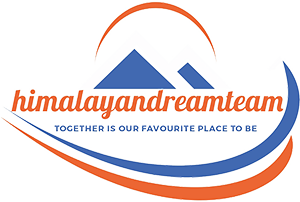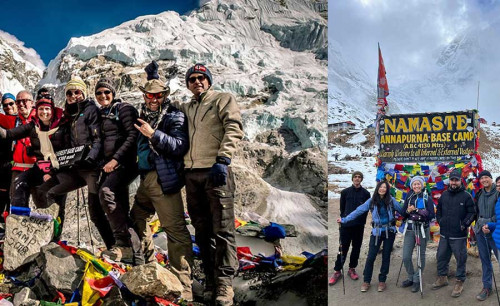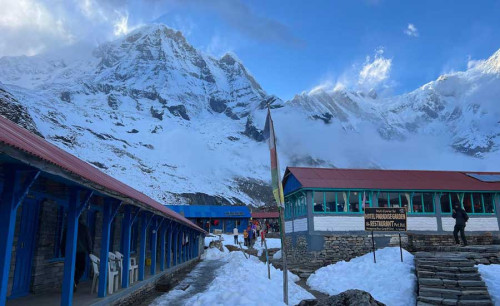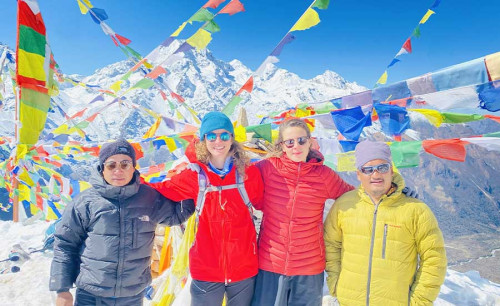Manaslu Circuit Trek Difficulty: A Comprehensive Guide
Published On : 11th May, 2025 By Himalayan Dream Team

The Manaslu Circuit Trek is a remarkable adventure that takes trekkers through the pristine landscapes of the Nepalese Himalayas. This trek offers stunning views of Mt. Manaslu, the eighth-highest mountain in the world, and takes you through remote villages rich in Tibetan culture. As one of the most sought-after routes, the Manaslu trek is known for its diverse terrain, where you will pass through lush forests, glacial rivers, and high mountain passes like Larkya La Pass. The combination of natural beauty and cultural immersion makes this trek a unique and unforgettable experience for those seeking both adventure and tranquility in the Himalayas.
Despite its allure, the Manaslu Circuit Trek difficulty should not be underestimated. With altitudes reaching over 5,000 meters and steep, rugged trails, the trek demands physical fitness and proper acclimatization. You will also need to secure the necessary Manaslu trekking permits, including the Manaslu Restricted Area Permit, MCAP, and ACAP, as the route passes through restricted areas. It's important to prepare adequately by training for endurance and packing the right gear. However, with the right preparation and mindset, the Manaslu region offers an incredible trekking experience, away from the crowded trails of more popular routes.
Trekking Challenges Manaslu Circuit
- High Altitude: The trek reaches elevations over 5,000 meters, particularly at Larkya La Pass, where altitude sickness can be a significant concern.
- Steep and Rugged Trails: The Manaslu trek involves long days of hiking on steep, uneven, and rocky paths, which require good physical fitness and stamina.
- Remote Location: The Manaslu Circuit Trek is located in a remote region of Nepal, making access to medical facilities and emergency services more challenging.
- Acclimatization Issues: Proper acclimatization is essential due to the high altitudes, and trekkers may face difficulties if not given adequate time to adjust.
- Weather Conditions: Harsh and unpredictable weather, especially at higher altitudes, can create difficult trekking conditions, particularly during the monsoon and winter months.
- Limited Accommodation: Lodges and teahouses in the Manaslu region are basic, with fewer facilities compared to more popular trekking routes like Annapurna or Everest.
- Restricted Area Permits: Obtaining the necessary Manaslu trekking permits (Manaslu Restricted Area Permit, MCAP, and ACAP) can be a complex process and requires advanced planning.
- Physical Fitness: The Manaslu Circuit Trek difficulty is high, with long hiking days and significant elevation gains, requiring trekkers to be in good physical condition.
- Logistical Challenges: The remote location means limited transportation options and sometimes difficult access to start and end points like Soti Khola and Dharapani.
- Language Barrier: In remote villages along the trail, communication can be challenging as many locals speak limited English, making it harder to navigate and interact without a guide.
Manaslu Circuit Trek Elevation Gain
One of the most significant challenges of the Manaslu Circuit Trek is the elevation gain. The trek starts at an altitude of around 700 meters in Soti Khola and ascends to 5,135 meters at the Larkya La Pass. This rapid elevation gain requires trekkers to be cautious and well-prepared for the effects of high altitude. The significant altitude variation over a relatively short distance can be taxing on the body.
Managing the elevation gain involves careful planning and pacing. Trekkers should be aware of the importance of gradual ascent to allow their bodies to acclimate to the decreasing oxygen levels. Proper acclimatization schedules, including rest days at higher altitudes, can help reduce the risk of altitude sickness and make the ascent more manageable. Training at higher altitudes before the trek can also be beneficial in preparing the body for the demands of the journey.
Distance and Elevation of Manaslu Circuit Trek
The below-provided table indicates some of the key elevations along the Manaslu Circuit Trek:
| Place | Elevation (meters) | Distance (in kilometres) |
|---|---|---|
| Arughat | 570 | 0 |
| Soti Khola | 730 | 14 |
| Machha Khola | 930 | 8 |
| Jagat | 1,350 | 12 |
| Deng | 1,860 | 9 |
| Namrung | 2,630 | 11 |
| Samagaon | 3,530 | 10 |
| Samdo | 3,860 | 8 |
| Dharamsala/Larkya Phedi | 4,460 | 13 |
| Larkya La Pass | 5,160 | 7 |
| Bhimthang | 3,720 | 8 |
| Tilije | 2,300 | 11 |
| Tal | 1,700 | 10 |
| Syange | 1,100 | 10 |
Altitude Sickness on the Manaslu Circuit Trek
| Description | Prevention |
|---|---|
| Altitude sickness is a major concern on the Manaslu Circuit Trek. As you ascend, the air becomes thinner, and the risk of altitude-related illnesses increases. Symptoms can range from headaches and nausea to more severe conditions like High Altitude Pulmonary Edema (HAPE) or High Altitude Cerebral Edema (HACE). Proper acclimatization and gradual ascent are crucial to mitigate these risks. | Preventing altitude sickness involves several strategies. Trekkers should stay hydrated, avoid alcohol and smoking, and take it slow, especially when gaining altitude quickly. Recognizing the early signs of altitude sickness and responding promptly by descending to lower altitudes can prevent serious complications. Consulting with a healthcare provider before the trek and carrying necessary medications can also be part of an effective prevention plan. |
Weather and Temperature of Manaslu Circuit Trek
The table below provides an overview of the typical weather conditions along the Manaslu Circuit Trek throughout the year:
| Month | Temperature (°C) | Precipitation (mm) | Weather Conditions |
|---|---|---|---|
| January | -8 to 6 | 50 to 100 | Cold, dry and snowy |
| February | -5 to 8 | 50 to 100 | Cold, dry and snowy |
| March | -3 to 11 | 100 to 200 | Mild with occasional rain and snow |
| April | 2 to 16 | 50 to 100 | Mild with occasional rain and snow |
| May | 7 to 19 | 50 to 100 | Mild with occasional rain and snow |
| June | 11 to 21 | 100 to 200 | Warm with occasional rain and thunderstorms |
| July | 12 to 22 | 200 to 300 | Warm with occasional rain and thunderstorms |
| August | 12 to 21 | 200 to 300 | Warm with occasional rain and thunderstorms |
| September | 9 to 19 | 100 to 200 | Mild with occasional rain and snow |
| October | 3 to 15 | 50 to 100 | Mild with occasional rain and snow |
| November | -3 to 10 | 50 to 100 | Cold, dry and occasionally snowy |
| December | -7 to 7 | 50 to 100 | Cold, dry and snowy |
Manaslu Circuit Trek Physical Fitness Tips
-
Incorporate Cardio Workouts Regularly
Cardio exercises like jogging, cycling, or brisk walking are essential for improving heart health and stamina. For the Manaslu Circuit Trek, aim for 30-45 minutes of cardio daily to condition your body for long days of trekking in varied terrain. -
Leg Strength and Flexibility Training
Strengthening your legs is crucial for the steep ascents and descents in the Manaslu trek. Incorporate exercises such as squats, lunges, stair climbing, and jump rope. For flexibility, practice yoga stretches like hamstring stretches and hip flexors to prepare for uneven paths. -
Build Endurance with Interval Training
Trekking requires sustained energy, so endurance is key. Engage in exercises like running, swimming, and cycling to build stamina. Interval training, alternating between high and moderate intensity, will help you develop the physical endurance needed for long trekking hours. -
Prepare with Altitude Training
The Manaslu Circuit involves trekking at high altitudes, so practicing altitude acclimatization is beneficial. If possible, spend time at higher altitudes before the trek, or train by adjusting your breathing patterns to enhance oxygen intake during physical exertion at higher elevations. -
High-Intensity Interval Training (HIIT)
HIIT is an excellent way to boost strength and cardio fitness simultaneously. Incorporating a HIIT workout before your trek can help reduce body fat, increase endurance, and improve overall stamina, ensuring you're ready for the intense demands of trekking in the Manaslu region. -
Yoga and Breathing Exercises
Yoga helps with flexibility, balance, and mental clarity—all essential for a successful trek. Incorporate breathing exercises and meditation to manage stress, improve focus, and regulate your breathing during high-altitude trekking in the Manaslu region. -
Focus on Rest and Recovery
Recovery is just as important as training. Ensure you get enough rest between workouts to avoid injury. A nutritious diet, proper hydration, and quality sleep will help your body recover and prepare for the physical demands of the Manaslu Circuit Trek.
Manaslu Circuit Trek Acclimatization
Acclimatization is essential for a successful trek. The itinerary should include rest days to help your body adjust to the altitude. This process helps reduce the risk of altitude sickness and ensures that you are physically prepared for the higher elevations of the trek. Effective acclimatization involves staying hydrated, eating a balanced diet, and getting plenty of rest.
Spending time at intermediate altitudes before the trek can also help with acclimatization. This might involve trekking in other high-altitude areas or spending time in mountainous regions. Listening to your body and not rushing the ascent is crucial. Acclimatization days not only help physically but also provide an opportunity to enjoy the local culture and scenery, making the trek more enriching.
Steep Ascents Manaslu Circuit Trek
The Manaslu Circuit Trek involves several steep ascents that can be physically demanding. Trekkers will encounter numerous uphill sections, especially as they approach higher altitudes. These steep ascents require good fitness and endurance. Proper pacing and using trekking poles can help manage the strain on the legs and knees.
Training for steep ascents should include exercises that mimic the conditions of the trek. This can involve hill walking, stair climbing, and using inclined treadmills. Strengthening the muscles around the knees and ankles can also help manage the physical demands of steep climbs. Trekkers should also practice carrying their trekking gear to get used to the additional weight and balance requirements.
Rough Terrain Manaslu Circuit Trek
The terrain on the Manaslu Circuit Trek is rugged and varied. Trekkers will navigate rocky paths, loose gravel, and uneven surfaces. Good trekking boots and poles can help manage the rough terrain and prevent injuries. Navigating this terrain requires attention to detail and careful footing to avoid slips and falls.
Preparation for rough terrain involves training on similar surfaces. Hiking on trails with varied terrain can help build the necessary skills and confidence. Wearing well-fitted, broken-in trekking boots can prevent blisters and provide the necessary support. Trekkers should also be prepared for changes in weather that can affect the trail conditions, making the terrain even more challenging.
River Crossings Manaslu Circuit Trek
Several river crossings add to the complexity of the Manaslu Circuit Trek. These crossings can be tricky, especially during the monsoon season when water levels are high. Bridges are typically used, but trekkers must remain cautious and steady. Ensuring that you have waterproof gear and proper footwear is essential for safe river crossings.
Practicing river crossings before the trek can be beneficial. Trekkers should learn to assess the safety of a crossing, understand the use of ropes, and maintain balance on slippery surfaces. Using trekking poles can provide additional stability during crossings. Being prepared for wet conditions and knowing how to dry gear efficiently can also help maintain comfort and safety during the trek.
Manaslu Circuit Trek Trail Conditions
The trail conditions on the Manaslu Circuit Trek can vary greatly depending on the season. In the pre-monsoon (spring) and post-monsoon (autumn) seasons, the trails are generally more stable. However, in the monsoon season, trails can be muddy and slippery, increasing the difficulty. Trekkers need to be prepared for changing trail conditions and adjust their gear and pace accordingly.
Monitoring weather forecasts and trail reports before and during the trek can provide valuable information about trail conditions. Choosing the right season to trek based on your skill level and preferences can also make a significant difference. Understanding that trail conditions can change rapidly due to weather and being flexible in your plans can enhance the trekking experience.
Weather Conditions Manaslu Circuit Trek
Weather conditions in the Himalayas can change rapidly. Trekkers should be prepared for a range of conditions, from sunny days to sudden snowstorms. Proper clothing and gear are essential to stay safe and comfortable. Layering clothing is a good strategy to manage varying temperatures and weather conditions.
Packing for diverse weather involves bringing moisture-wicking base layers, insulating mid-layers, and waterproof outer layers. Trekkers should also have gloves, hats, and sunglasses to protect against the elements. Understanding the local climate and being prepared for sudden changes can help prevent hypothermia, heat exhaustion, and other weather-related issues.
Remote Trekking Manaslu Circuit
The Manaslu Circuit Trek is a remote trek, far from modern amenities. This remoteness adds to the challenge, as access to medical facilities, communication, and rescue operations can be limited. Trekkers need to be self-sufficient and well-prepared, carrying necessary supplies and knowing basic first aid.
Traveling in remote areas requires careful planning. Trekkers should have a well-thought-out itinerary, emergency contacts, and a reliable communication device. Carrying a first aid kit, extra food, and a water purification system can be lifesaving. Understanding the limitations of being in a remote area and being prepared to handle emergencies independently is crucial.
Manaslu Circuit Trek Preparation
Preparation is key to overcoming the challenges of the Manaslu Circuit Trek. This includes physical training, gathering necessary gear, obtaining permits, and planning your itinerary. Being well-prepared can significantly reduce the trek's difficulty. Researching the route, understanding the demands, and knowing what to expect can make the trek more enjoyable and less daunting.
Proper preparation also involves mental readiness. Trekkers should set realistic expectations and be prepared for the physical and mental demands of the trek. Joining trekking forums, reading guidebooks, and seeking advice from experienced trekkers can provide valuable insights and tips. Comprehensive preparation ensures that trekkers are ready to face the challenges and make the most of their adventure.
1. Physical Fitness Training
To cope with long trekking days and steep ascents, begin your training at least 2–3 months in advance:
-
Cardiovascular workouts like hiking, running, swimming, or cycling (30–60 minutes, 4–5 times per week)
-
Leg strength exercises such as squats, lunges, and stair climbing
-
Endurance training including multi-day hikes or long walks with a backpack
-
Balance and flexibility through yoga and stretching to prevent injuries on uneven trails
2. Altitude Acclimatization
The trek reaches a high point at Larkya La Pass (5,160 meters), making altitude a major factor. Prior exposure to elevations above 3,000 meters is helpful. If not possible, ensure your itinerary includes rest days (such as in Sama Gaon) to acclimatize properly.
3. Mental Preparation
The remote setting, basic lodges, and long hiking days can be mentally taxing. Be ready for:
-
Limited facilities (basic rooms, shared toilets, no heating)
-
Unpredictable weather
-
Minimal connectivity or mobile signals
Approaching the trek with flexibility, patience, and resilience will help you enjoy the experience more fully.
4. Gear and Equipment Checklist
Pack light but smart. Essentials include:
-
Well-broken-in hiking boots
-
A warm sleeping bag (-15°C rated)
-
Layered clothing for variable temperatures
-
Trekking poles, headlamp, power bank
-
Water purification tablets, first aid kit, snacks
Don’t forget to carry passport copies, permits, and insurance documents.
5. Trekking Permits & Guide Arrangement
The Manaslu region is a restricted area, so you'll need:
-
Manaslu Restricted Area Permit (RAP)
-
Manaslu Conservation Area Permit (MCAP)
-
Annapurna Conservation Area Permit (ACAP)
Trekking is not allowed without a licensed guide, and you must travel in a group of at least two. Work with a trusted trekking agency to handle permits and logistics.
6. Travel Insurance
Purchase travel insurance that covers high-altitude trekking and helicopter evacuation, especially if trekking above 5,000 meters. Verify coverage for Nepal and specific altitudes in your policy.
High Passes Manaslu Circuit Trek
The highlight and one of the most challenging parts of the Manaslu Circuit Trek is crossing the Larkya La Pass at 5,135 meters. This high pass presents both technical and physical challenges, requiring careful acclimatization and a strong fitness level. The ascent to the pass is steep and can be covered in snow and ice, making it a formidable part of the trek.
Preparing for high passes involves specific training and equipment. Trekkers should practice walking on snow and ice, possibly with crampons and ice axes. Understanding how to use these tools effectively can be crucial for safety. Additionally, being mentally prepared for the high altitude and the physical exertion required can help trekkers successfully navigate this challenging part of the trek.
Manaslu Circuit Trek Endurance
Endurance is critical for the Manaslu Circuit Trek. The trek is long and demanding, typically taking around 14 to 18 days to complete. Trekkers must be prepared for long days of hiking, often in challenging conditions. Building endurance through consistent training and gradual increases in hiking distance and elevation is essential.
Endurance training should start well in advance of the trek. Long-distance hiking, combined with strength and cardio workouts, can build the stamina needed for the trek. Understanding your limits and pacing yourself during the trek can prevent burnout and injuries. Trekkers should also pay attention to nutrition and hydration to maintain energy levels throughout the journey.
Cost of Manaslu Circuit Trek (USD 2000 - 3000)
| Factor | Description | Estimated Cost (USD) |
|---|---|---|
| Permits | Manaslu Restricted Area Permit (MRAP), MCAP, and ACAP | 100 - 150 |
| Guide and Porter Fees | Hiring a licensed guide and porter (including wages, food, accommodation) | 600 - 800 |
| Transportation | Drive from Kathmandu to Machhakhola and back from Dharapani | 200 - 300 |
| Accommodation | Teahouse accommodation throughout the trek | 300 - 500 |
| Meals | Three meals per day during the trek (breakfast, lunch, dinner) | 300 - 500 |
| Travel Insurance | Insurance covering high-altitude trekking and emergency evacuation | 100 - 200 |
| Equipment Rental or Purchase | Hiring or buying necessary trekking gear (boots, jackets, sleeping bags, etc.) | 100 - 300 |
| Miscellaneous Expenses | Charging devices, hot showers, internet access, tips for guide and porter | 200 - 250 |
| Total Estimated Cost | 2000 - 3000 |
Technical Difficulty Manaslu Circuit Trek
While the Manaslu Circuit Trek does not require technical climbing skills, it does involve traversing glaciers, steep paths, and potentially snowy and icy conditions. Basic knowledge of using crampons and ice axes can be beneficial, especially during the winter season. Trekkers should be prepared for these technical aspects to ensure a safe and enjoyable trek.
Gaining experience in similar conditions before the trek can be advantageous. Trekkers can participate in guided winter hikes or mountaineering courses to develop the necessary skills. Understanding how to navigate and handle technical terrain confidently can make a significant difference in the trek's overall difficulty and safety.
Manaslu Circuit Trek Logistics
Logistics play an important role in the success of the trek. This includes arranging transportation to and from the trailhead, booking accommodations, and organizing food and supplies. Working with a reputable trekking agency can help streamline these logistics, ensuring that trekkers have everything they need for a smooth and enjoyable journey.
Effective logistics planning also involves understanding the local infrastructure and potential challenges. Trekkers should be prepared for limited availability of certain amenities and plan accordingly. Carrying essential items, understanding local customs, and having a flexible itinerary can help manage logistical challenges and enhance the trekking experience.
Duration of Manaslu Circuit Trek
The typical duration of the Manaslu Circuit Trek is around 14 to 18 days, depending on the pace and acclimatization schedule. This extended period requires careful planning and preparation to ensure you can manage the physical and logistical demands. Understanding the trek's duration and planning for rest days and acclimatization can help prevent fatigue and altitude sickness.
Trekkers should also consider the additional time needed for travel to and from the starting and ending points of the trek. Building in buffer days for unexpected delays or rest can make the overall experience more relaxed and enjoyable. Planning the trek duration thoughtfully ensures that trekkers can complete the journey safely and comfortably.
Manaslu Circuit Trek Fitness Requirements
To tackle the Manaslu Circuit Trek, trekkers should focus on building their fitness levels. This includes cardiovascular training, strength training, and flexibility exercises. Regular long-distance hikes and carrying a loaded backpack during training can also help simulate trekking conditions. Meeting these fitness requirements is essential for a successful and enjoyable trek.
Creating a fitness plan that progressively increases in intensity and duration can help prepare the body for the demands of the trek. Consulting with a fitness trainer or joining a trekking club can provide additional support and motivation. Ensuring that you meet the fitness requirements before embarking on the trek can enhance your ability to handle the challenges and enjoy the breathtaking scenery of the Manaslu Circuit.
Itinerary For The Manaslu Circuit Trek:
- Day 1: Arrival in Kathmandu and transfer to the hotel.
- Day 2: Sightseeing in Kathmandu and trekking preparation.
- Day 3: Drive to Machhakhola.
- Day 4: Trek to Jagat (6-7 hrs).
- Day 5: Trek to Dang (6-7 hrs).
- Day 6: Trek to Ghap (4-5 hrs).
- Day 7: Trek to Lho.
- Day 8: Trek to Sama Gaon.
- Day 9: Rest & exploration day at Sama Gaon.
- Day 10: Trek to Samdo.
- Day 11: Trek to Dharmasala / Larkya Phedi.
- Day 12: Cross Larkya La Pass (5100m) and trek to Bhimtang.
- Day 13: Trek to Dharapani.
- Day 14: Drive back to Kathmandu.
- Day 15: Rest day in Kathmandu.
- Day 16: Transfer to the international airport for departure.
Tips For Minimizing Manaslu Circuit Trek Difficulty
| Tip | Description |
|---|---|
| Hiring Professional Guides And Porters | Guides and porters are essential companions for your trek. They provide expertise, help navigate rugged trails, and offer first aid in emergencies. Porters can carry 15 to 25 kg of your luggage, reducing your load and making the trek easier. A porter guide can also be hired to carry luggage and guide you along the trail. |
| Determining The Best Time For The Trek | Seasons impact the difficulty of the Manaslu Circuit Trek. Spring and autumn offer ideal conditions with longer daylight hours, while monsoon is perfect for nature lovers. Winter is best for experienced trekkers seeking solitude and snow-covered scenery. |
| Getting Good Training Before The Manaslu Circuit Trek | Training is essential to ensure physical fitness and stamina for the trek's steep ascents and descents. Cardiovascular exercises and high-altitude hikes are recommended. Various training packages and online tutorials can also help prepare for the trek. |
| Customize Itinerary As Per Your Needs | It’s important to choose a flexible itinerary that caters to your interests and objectives, ensuring a fulfilling experience. Customize your itinerary to explore the highlights and culture of the Manaslu region as per your preferences. |
| Packing Properly | Packing light but essential gear is crucial. Items like sunglasses, sunscreen, warm clothing, hiking boots, water bottles, and a sleeping bag for -15°C temperatures are necessary to make your journey comfortable. |
| Have An Emergency Plan | An emergency plan is vital in case of altitude sickness or accidents. Ensure that you are equipped with an evacuation strategy, communication plan, and other necessary arrangements for unexpected situations. |
Packing List for Manaslu Circuit Trek
- Sunglasses (with UV protection)
- Sunscreen (with high SPF)
- Lip Balm (with SPF)
- Hat and Beanie
- T-shirts and Shirts
- Fleece Jacket
- Down Jacket
- Waterproof Jacket and Trousers
- Warm Gloves
- Hiking Boots (with good ankle support)
- Additional Pairs of Socks
- Day Pack (for carrying essentials)
- Duffle Bags (for porter carrying)
- Torchlight (with extra batteries)
- Water Bottle (minimum 2 liters capacity)
- Small Hand Towel
- Sleeping Bag (suitable for -15°C temperatures)
- First Aid Kit (personal medication, blister care)
- Trekking Poles (optional but useful)
- Snacks and Energy Bars
- Camera (optional, with extra batteries)
Manaslu Conservation Area Project (MCAP Permit)
All conservation areas in Nepal require a special permit. The Manaslu Conservation Area starts in Philim, and you need an MCAP Permit to trek. The MCA Permit cost is consistent throughout the year and remains the same regardless of the trek duration.
| Category | Permit Cost (NRs) | Details |
|---|---|---|
| SAARC Nationals | NRs. 1,000 per person | MCA Permit is required to trek in the Manaslu Conservation Area. |
| Other Nationals | NRs. 3,000 per person | MCA Permit is required to trek in the Manaslu Conservation Area. |
| Nepalese Nationals | NRs. 100 per person | MCA Permit is required to trek in the Manaslu Conservation Area. |
| Children Below 10 Years | Free | MCA Permit is not required for children under 10 years of age. |
Manaslu Restricted Area Permit (RAP)
The Manaslu Restricted Area Permit (RAP) fee varies based on the season:
| Season | Cost | Details |
|---|---|---|
| September to November | USD 100 per person for the first week | Costs USD 15 per person per day after the first week. |
| December to August | USD 75 per person for the first week | Costs USD 10 per person per day after the first week. |
Other Permits
If you plan to extend your trek to Tsum Valley or other regions, additional permits are required:
| Permit Type | Cost | Details |
|---|---|---|
| Tsum Valley Permit (Sept-Nov) | USD 40 per person for one week | Costs USD 7 per day after one week. |
| Tsum Valley Permit (Dec-Aug) | USD 30 per person for one week | Costs USD 7 per day after one week. |
| Trekkers Information Management System (TIMS) Card | NRs. 1,000 for Group Trekkers, NRs. 2,000 for FIT | TIMS Card is required for the Annapurna Circuit Trek or Annapurna Base Camp route. |
| TIMS Card (SAARC Countries) | NRs. 300 for Group Trekkers, NRs. 600 for FIT | Costs for trekkers from SAARC countries. |
Entry Permit Counters
Permits for the Annapurna Conservation Area (ACA) and Manaslu Conservation Area (MCA) can be obtained from:
- Nepal Tourism Board, Kathmandu (for Annapurna & Manaslu)
- Nepal Tourism Board, Tourist Service Center, Pokhara (for Annapurna only)
- Besisahar, Lamjung: ACAP Entry Permit Center, Besisahar, Lamjung (for Annapurna only)
Open Sunday to Friday, except on public holidays: 9 am-5 pm.
Documents Required for Manaslu Circuit Trek Permit:
- Original passport
- Four passport-sized photos
- Nepali visa with the arrival stamp
- Money in cash
- Readable travel insurance papers
- Copy of flight tickets with the date of arrival and departure
- A scanned passport copy along with Nepal Visa
- Consent letter to Immigration Chief (mention reasons for the permit in advance)
- Consent letter from the trekking company (guarantee to present the required documents upon arrival)
Process of Getting Permits
Process of Getting Permits and Where to Obtain Them
Fill up the online application for MCAP and ACAP separately on the official website. Address it to the DG, Department of Immigration, Government of Nepal, and send the application.
- Upload the travel itinerary (in printed form) with trekking dates.
- Upload the photocopy of the passport’s main page and visa page.
- Arrange your money in American dollars. You can also note down the serial number and denomination of each note on the agency letterhead.
Go to the Department of Immigration, located in Anamnagar. Then follow these steps:
- Submit the American dollars and mention all the serial numbers and denominations of each note on the agency letterhead.
- Submit it to the Global IME Bank located at the Immigration Department premises and collect the deposit slip.
- Verify the official document, update authority certificate, guide insurance, and tax clearance from the central bank.
- An officer will verify the details and send it to the second officer for further verification.
- The file will be forwarded to the Head of Immigration for final verification.
- The individual permits will be printed along with stickers and signed.
- After getting the final stamp on the stickers, you will receive your Manaslu Restricted Area Permit.
Drive to the Nepal Tourism Board office and pay the permit fee for MCAP and ACAP in local currency. Then follow these steps:
- Submit the application form.
- Receive your permit and paste your photograph on it.
- Get the form signed.
Now you're all set to trek in the Manaslu region.
FAQs Related to Manaslu Circuit Trek
| S. No. | FAQ (H2) | Answer |
|---|---|---|
| 1 | What is the Manaslu Circuit Trek? | The Manaslu Circuit Trek is a popular trekking route in the Manaslu region of Nepal, offering stunning views of Mt. Manaslu, the eighth-highest mountain in the world. It passes through remote villages, lush forests, and high mountain passes. |
| 2 | How long does the Manaslu Circuit Trek take? | The trek typically takes 14 to 18 days, depending on your pace and acclimatization needs. It covers around 177 kilometers of varied terrain. |
| 3 | What is the best time to do the Manaslu Circuit Trek? | The best time to trek the Manaslu Circuit is during the spring (March to May) and autumn (September to November), when the weather is pleasant and the skies are clear. |
| 4 | Do I need permits for the Manaslu Circuit Trek? | Yes, you will need a Manaslu Restricted Area Permit (MRAP), Manaslu Conservation Area Permit (MCAP), and Annapurna Conservation Area Permit (ACAP) to trek in the Manaslu region. |
| 5 | Is the Manaslu Circuit Trek difficult? | The trek is considered challenging due to its high altitude, remote locations, and long hiking days. Trekkers should be physically fit and prepared for steep climbs and altitudes above 5,000 meters. |
| 6 | Can I trek the Manaslu Circuit independently? | No, trekking the Manaslu Circuit independently is not allowed. You must be accompanied by a licensed guide, and at least two trekkers are required to obtain permits. |
| 7 | What is the highest point on the Manaslu Circuit Trek? | The highest point of the trek is the Larkya La Pass at 5,160 meters (16,929 feet), which offers breathtaking views of surrounding Himalayan peaks. |
| 8 | What kind of accommodation is available on the Manaslu Circuit Trek? | Accommodation along the trek is mostly basic teahouses and lodges, offering simple rooms and shared bathrooms. Facilities are modest but sufficient for trekkers. |
| 9 | Is the Manaslu Circuit Trek crowded? | The Manaslu Circuit Trek is less crowded compared to the Annapurna or Everest regions, providing a more peaceful and remote trekking experience. |
| 10 | How do I prepare for the Manaslu Circuit Trek? | Preparation includes physical fitness training like hiking and cardiovascular exercises. It's also important to have the right trekking gear and clothing for high-altitude conditions. |
| 11 | What should I pack for the Manaslu Circuit Trek? | Essential items include a good-quality backpack, warm clothing, trekking boots, a sleeping bag, trekking poles, water purification tablets, and a basic first-aid kit. |
| 12 | Are there any risks of altitude sickness on the Manaslu Circuit Trek? | Yes, altitude sickness is a risk, especially at higher elevations like the Larkya La Pass. Proper acclimatization, hydration, and following your guide's instructions are essential to minimize this risk. |
| 13 | How do I get to the starting point of the Manaslu Circuit Trek? | The trek usually starts at Soti Khola, which is about a 6-8 hour drive from Kathmandu. You can get there by private jeep or public bus. |
| 14 | What are the highlights of the Manaslu Circuit Trek? | Key highlights include crossing the Larkya La Pass, experiencing the unique Tibetan-influenced culture, and enjoying breathtaking views of Mt. Manaslu and other Himalayan peaks. |
| 15 | Do I need travel insurance for the Manaslu Circuit Trek? | Yes, travel insurance is essential. It should cover high-altitude trekking, medical emergencies, evacuation, and trip cancellations, given the remote and challenging nature of the trek. |
Additional FAQs
How difficult is the Manaslu Circuit?
The Manaslu Circuit Trek is considered a challenging trek due to its length, remote terrain, and high altitude. With the highest point at Larkya La Pass (5,160 meters) and daily treks averaging 6–8 hours, it requires strong physical fitness, mental endurance, and prior trekking experience. The difficulty is compounded by limited infrastructure, basic accommodation, and the need for proper acclimatization.
Is Manaslu harder than Annapurna?
Yes, Manaslu is generally harder than the Annapurna Circuit. While both treks involve high-altitude passes, Manaslu is more remote, less developed, and has longer hiking days with fewer rest stops. Trekkers on the Manaslu route must also deal with stricter permit regulations and fewer support services compared to Annapurna.
How difficult is it to climb Manaslu?
Climbing Mount Manaslu (8,163 meters) is far more technical and dangerous than trekking the Manaslu Circuit. It is the eighth-highest mountain in the world, and climbing it requires advanced mountaineering skills, use of oxygen, crampons, ropes, and the ability to navigate crevassed glaciers. It is not recommended for novice climbers.
Do you need oxygen to climb Manaslu?
Yes, supplemental oxygen is often used during a Manaslu summit expedition, especially above Camp 3. While some elite climbers may summit without it, oxygen is recommended for safety, improved performance, and reducing the risk of altitude sickness.
Can you do Manaslu Circuit without a guide?
No. Trekking the Manaslu Circuit without a licensed guide is not allowed. The region is a government-regulated restricted area, and at least two trekkers must be accompanied by a registered guide affiliated with a local trekking agency to obtain permits.
Is the Manaslu Circuit trek safe?
The Manaslu Circuit is considered safe when trekked with a certified guide, proper gear, and an acclimatization plan. Safety risks include altitude sickness, rough trails, and weather-related issues, but these can be minimized through preparation and professional support. Always ensure you have travel insurance that covers high-altitude evacuation.
How many people died in Manaslu?
On the trekking route, fatalities are rare and usually due to altitude sickness or accidents in extreme weather. However, climbing Mount Manaslu is more dangerous, with several deaths recorded each year during summit attempts. Accurate data varies by year, but safety remains a priority through regulated guiding and better rescue options.
What is the success rate of Manaslu?
The Manaslu Circuit Trek has a high success rate, estimated at over 90%, especially for those who follow proper acclimatization schedules. In contrast, climbing Manaslu has a lower success rate, around 60–70%, due to weather, altitude, and technical climbing demands.
What is the hardest part of the Annapurna Circuit?
The Thorong La Pass (5,416 meters) is the most difficult section of the Annapurna Circuit. It involves a steep ascent, long trekking hours, and the risk of altitude sickness—similar to Larkya La Pass on the Manaslu Circuit in difficulty and elevation.
Conclusion
The Manaslu Circuit Trek is a challenging yet rewarding adventure that requires careful preparation and a good level of physical fitness. By understanding the various difficulties involved and adequately preparing for them, trekkers can successfully navigate this stunning trek and enjoy the breathtaking beauty of the Nepalese Himalayas. Whether it's dealing with high altitude, rough terrain, or unpredictable weather, being well-prepared can make all the difference in having a safe and memorable trekking experience. Through comprehensive preparation and understanding the challenges, trekkers can embark on this incredible journey with confidence and excitement.
Recent Posts
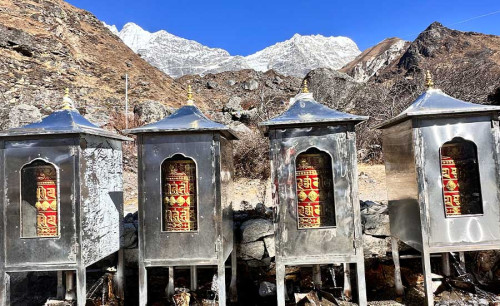
2nd Dec, 2025
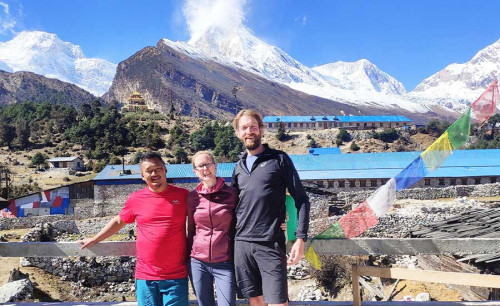
24th Nov, 2025
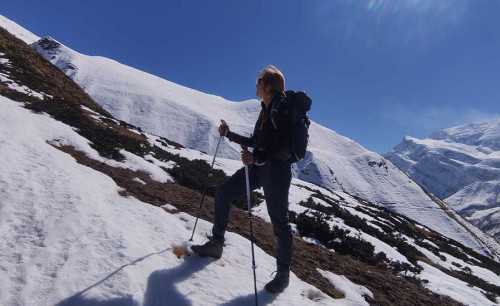
21st Nov, 2025
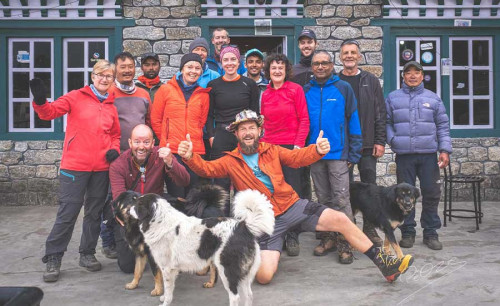
10th Nov, 2025
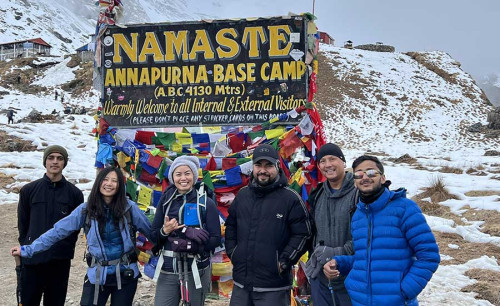
9th Nov, 2025

25th Oct, 2025

22nd Oct, 2025

17th Oct, 2025

17th Oct, 2025

13th Oct, 2025

